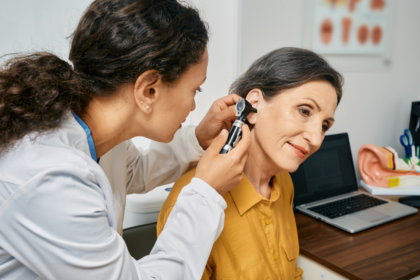In the vast landscape of medical advancements, penicillin stands out as a beacon of hope, offering a lifeline to those battling infections. Despite its efficacy, a notable segment of the population is flagged as allergic, steering them away from using this potent antibiotic. But is this diagnosis always accurate? This brings us to the pivotal question: “Where can I get a penicillin allergy test?” For anyone potentially mislabeled or genuinely concerned about an allergic reaction to penicillin, understanding where and how to undergo a test is crucial.
Understanding Penicillin Allergy
Penicillin allergies can manifest in various ways, from mild rashes and itching to severe, life-threatening reactions. However, penicillin delabeling allergies might lead you to avoid this antibiotic group unnecessarily, resulting in the use of less appropriate or more expensive antibiotic treatments.
Testing can clarify whether the immune system genuinely reacts against penicillin, or if past symptoms were unrelated or incorrectly attributed. It’s a vital step toward ensuring you receive the most effective and safest medications in future treatments.
How to Get Tested?
Consult Your General Practitioner
The first step toward getting a test is to consult with your general practitioner. Your practitioner can review your medical history, assess the symptoms that you experienced, and determine if an allergy test is recommended. If they suspect that your previous reactions could be misdiagnosed or if the allergy could have resolved—as many childhood penicillin allergies do—they can refer you to an allergist.
Visiting an Allergist
An allergist is a doctor specially trained to diagnose and treat allergies. They can perform specific tests to accurately diagnose whether you have a penicillin hypersensitivity. The testing process generally includes:
- Skin Testing: This initial test involves applying a small amount of penicillin protein onto your skin and observing any reactions.
- Intradermal Testing: If the initial skin test is negative, but there is still suspicion of an allergy, a more sensitive test involving injecting a small amount of the allergen just beneath the skin might be conducted.
- Oral Challenge: This is often considered the gold standard for these tests. Under careful medical supervision, you’ll ingest a small dose of penicillin to monitor for adverse reactions in a safe and controlled environment.
Types of Facilities Offering Tests
Besides private clinics and allergists’ offices, many hospitals and larger medical centres offer allergy testing. You may also find university medical schools and research centres providing sophisticated testing options. Some may even engage in studies or trials aiming at improving understanding and treatments of antibiotic allergies.
Conclusion
Identifying where to get a penicillin allergy test is a significant first step towards ensuring an accurate diagnosis and treatment. With the right testing approach, those previously labelled as allergic can consider using penicillin, should it be the best treatment option. This journey towards accurate diagnosis and effective treatment underscores the importance of precision in medical practice and the ongoing quest to optimize patient care.





